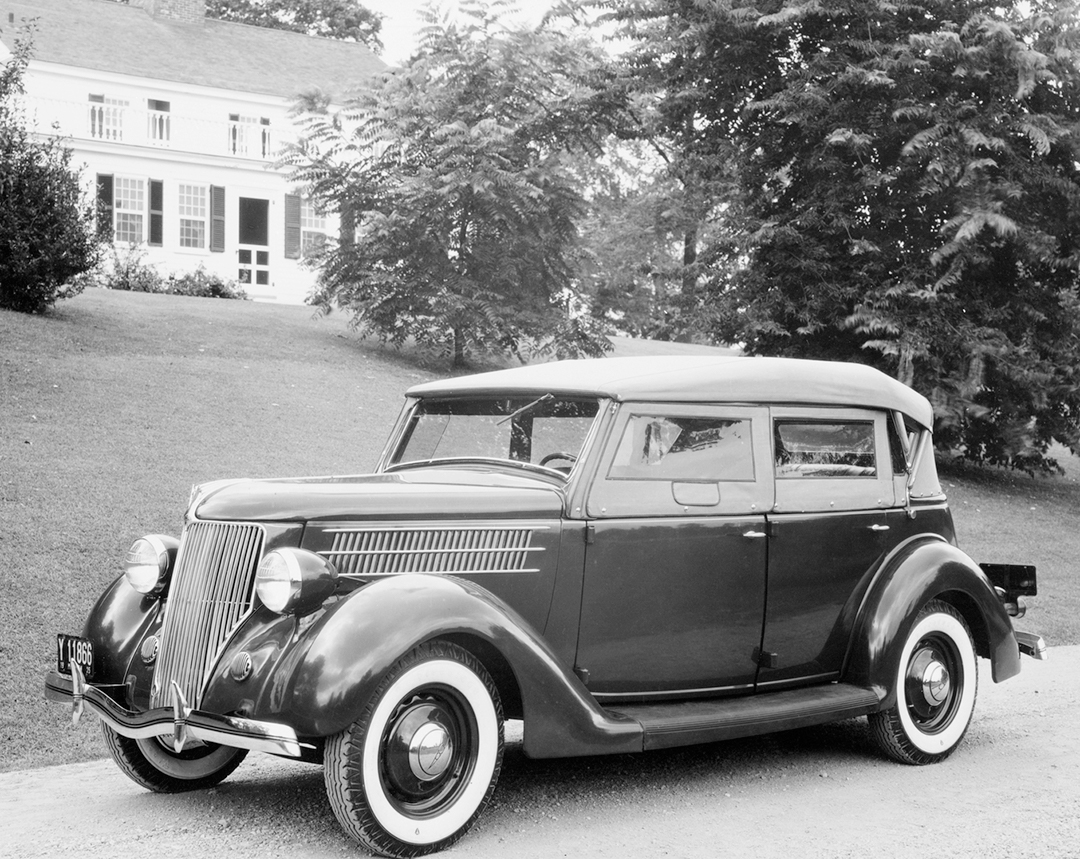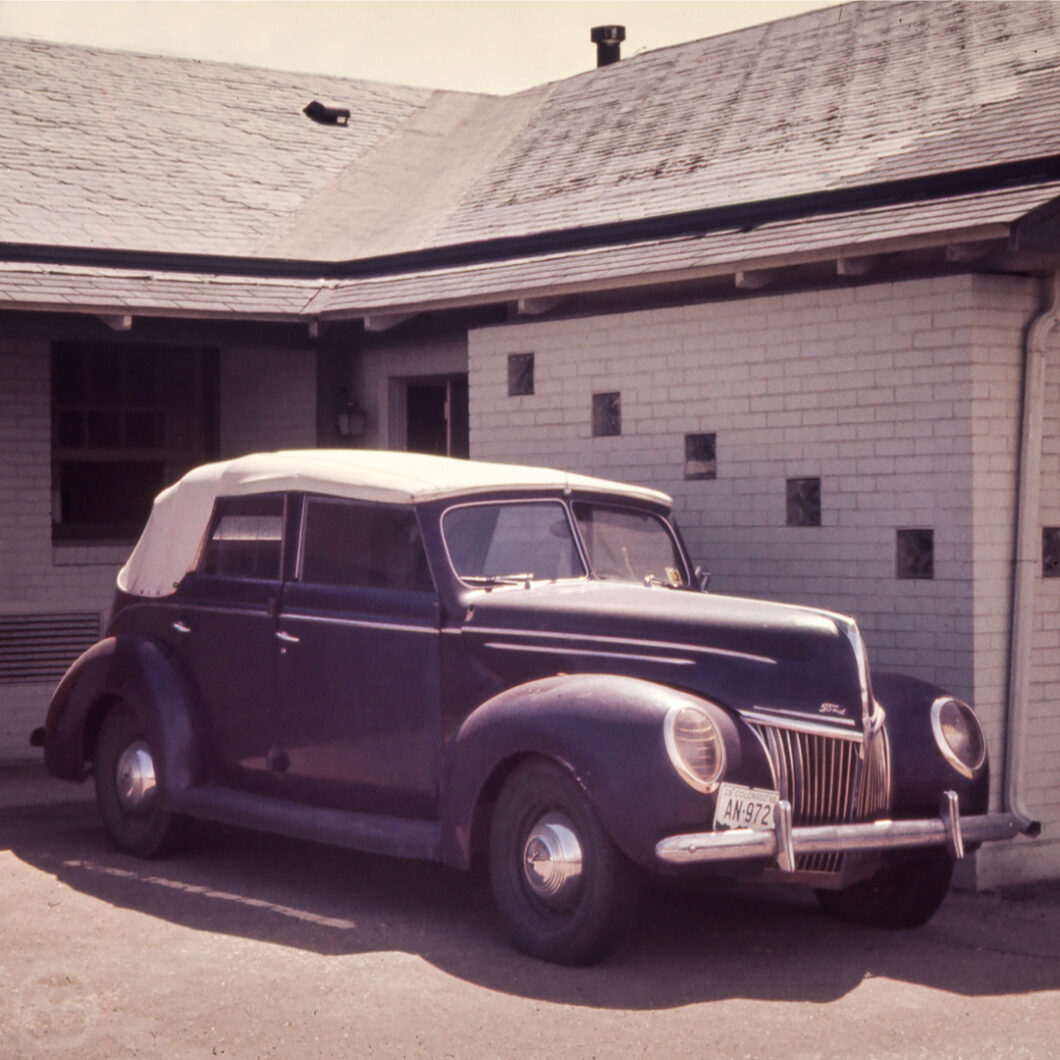As soon as fully-enclosed bodies became safe and affordable, buyers flocked to them. Essex, a part of Hudson, launched the first affordable closed car in 1922, and by 1930, Tourers (traditional open cars with a folding top and side curtains) were an endangered species. But while Touring cars might have been going the way of the Dodo, there was a new type of open vehicle coming up in the world: convertible sedans, exemplified by this 1939 Ford Deluxe.
Like pure roadsters, Touring cars had no windows at all, just a folding top and curtains or, in the mid-1920s as they began to lose ground, sometimes a solid top with side curtains. In the era before safety glass, many people preferred tourers, and on a summer evening, a tourer is delightful. But just like later MG TDs, tourers were drafty at the best of times, and aside from the most hard-core motorists, very few people really liked driving them in wintery or wet conditions.
Convertible sedans promised all the open-air wonder of Tourers but with closed-car warmth and solidity in rain or snow. Of course, Touring car bodies were cheap to build because of their simplicity. Convertible sedans, on the other hand, were very expensive to make thanks to the technical challenges posed by trying to make an open body with conventionally hinged doors as weather-tight as a closed one. Really, this was an almost impossible task in the 1930s.
Convertible Sedan Evolution
Convertible sedans first appeared among European Carrosseries, but in the late 1920s, they also found an audience with American coachbuilders like Derham, LeBaron, and Murphy. By 1927, both Lincoln and Hudson (ironically) were cataloging the style, even if the bodies were built by outside suppliers, either coachbuilders like LeBaron or mass-production body constructors like Briggs, who supplied bodies to Ford.
The era of the convertible sedan was 1928-1939, an era that quickly proved inauspicious for such an expensive niche market, even if the cars did bridge the gap between old-time Tourers and newly plebeian sedans.
There were some distinctly high bars to clear to build a convertible sedan. Unlike a two-door convertible, which only has to accommodate one door per side and which, in the late 1920s, could put occasional passengers in an outdoor rumble seat, the convertible sedan had to mirror a regular sedan in shape and scope, with roll-up windows and a fully-sealed interior compartment with the top up.
That means a stalagmite-like B-pillar, much like later hardtop sedans, which can’t attach to a fixed roof. That means that the B-pillar has to be very strong to hold the rear door and mate to the front door on each side. The body itself needs lots of reinforcement or it will flex, misalinging the doors and gradually shaking loose lots of components. Remember that, aside from a few exotics from Lancia, in the 1930s almost all cars and trucks had conventional ladder frames. These could be fairly stout, but anybody who’s driven an old pickup truck (or even a few new ones) knows that they flex.
To be truly weather-tight means wind-up glass windows, and for a fully clean convertible profile, they need to be frameless, even if they wear chrome around the edges of the windows. They also need to roll down into the doors completely, which can be more difficult if the rear door has a wheel cut out, as was often the case with mid-1930s streamlined styles.
The solution for many makes was adding B-pillar extensions when the top was up and heavily reinforcing the B-pillars and floors, a costly and heavy setup. The B-pillar extensions often rattled and squeaked, and rarely sealed as tightly as they looked in the brochure.
Then there was the issue of where to stow a REALLY BIG convertible top, which on a typical 1930s car could stretch for two-thirds’ of the car’s length. European makers, particularly German coachbuilders, often settled for an old-fashioned cabriolet look, with the huge top stacked up on the rear deck, as seen on the later VW Beetle convertible. American manufacturers, particularly in the 1930s, tried to hide the top away for a truly clean look, which created more packaging problems and usually ate up most of the luggage space.
This often made convertible sedans the most expensive and least practical bodies in any manufacturer’s lineup, no matter how “mass market” the brand. Chevrolet never offered a convertible sedan, but Ford, Plymouth, and Studebaker all did at various times. The convertible sedan was a seriously glam look to sport, even if the times were gloomy, and even though they were never common, they were an object of desire.

Ford’s Convertible Sedans
Ford’s first foray came in 1935, with its first convertible sedan pacing the Indy 500 and priced at $750. This was upper-middle-class territory and expensive for a Ford, but it also packed the now-familiar Ford V8. Technically, however, this car, typically labeled as the Phaeton, was closer to a Tourer than a proper four-door convertible sedan. It still used side curtains rather than fixed rolldown windows, and that practice continued into 1936.
Many of Ford’s convertible sedans bore the unmistakable style imprint of Eugene T. “Bob” Gregorie, hired by Edsel Ford in early 1931 after stints at GM, Dietrich, and New York’s Brewster. Gregorie’s first task at Ford was styling the British Y-type, but his design was scaled up at Edsel’s request and used as the basis of the famous 1933 and 1934 American Fords. Ford often worked with Briggs, and while some of Gregorie’s influence was seen in the 1935-36 Fords, their bodies were primarily designed by the builder. Gregorie’s influence with Edsel grew with each successive design.
In early 1935 he formed the core of what would be Ford’s then-tiny version of GM’s Art & Colour, and Gregorie took a direct hand in the 1937-42 Fords. 1937 marked the first year the Convertible Sedan became a proper modern droptop, with fixed windows and a removable upper B-pillar, a key change to making the car more weatherproof.
Standard practice in the high thirties was to make bodies last a little longer than normal. One year’s Deluxe Ford would form the basis of next year’s Standard Ford, and so it was that in 1939 the Standard was a slightly warmed-over 1938, and the Deluxe a pretty vision of the 1940 future. That year there was also the first Mercury, another Gregorie design that looked very much like a fancier version of the Ford Deluxe.
The End of the Convertible Sedan
Even a company as large as Ford, however, could not make convertible sedans work economically. At 3,561 cars, the 1939 Ford Deluxe Convertible Sedan was one of the most produced exemplars of the type, but it was also the last such vehicle from Ford. Mercury offered a convertible sedan in 1940, but Ford never revisited it.
The entire party was ending for convertible sedans, indeed, mainly because of their expense. The only other type that was as costly was the wood-framed station wagon, and there was more of an appetite for that body than there was for a four-door convertible. After the end of the 1941 model year, all of the convertible sedans were gone, and they did not return after the war, supplanted permanently by wagons.
Only Lincoln ever really succeeded in reviving the four-door convertible sedan, and even then only on a modest scale. The Famous 1960s Lincoln four-door convertibles were not huge sellers and they were also very expensive to make, though they were more rigid than any prewar type. Kaiser-Frazer also offered 1930s-style four-door droptops in the late 1940s to limited interest.
Convertible sedans, however, were almost immediately recognized by collectors in the 1950s as rare items worth saving, so many of the 1930s models survived and were restored during the 1960s. The featured car at the top is from the OldMotors Archive, and is pictured as it was in 1971.

